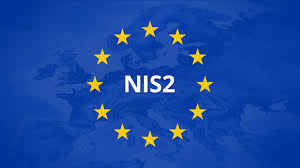NIS2 Overview: How the EU Is Reshaping Digital Security

In an era where cyberattacks have become increasingly sophisticated and costly, the European Union has taken decisive action to fortify its digital defenses. NIS2, which came into effect in October 2024, represents one of the most ambitious cybersecurity legislative efforts in European history. This comprehensive framework does not merely update existing regulations; it fundamentally transforms how organizations across the continent approach digital security, governance, and risk management.
Understanding NIS2: A New Era of Cybersecurity Regulation
The Network and Information Security Directive 2 (NIS2) is the EU’s latest comprehensive cybersecurity framework designed to strengthen the security of network and information systems across member states. Unlike its predecessor, NIS1, which covered only a limited number of critical infrastructure operators, NIS2 casts a significantly wider net. The directive recognizes that in our interconnected digital economy, vulnerabilities in one sector can cascade rapidly across others, creating systemic risks that threaten economic stability and public safety.
At its core, the directive aims to achieve three fundamental objectives: harmonize cybersecurity requirements across all EU member states, raise the baseline security posture of organizations operating in critical sectors, and create a culture of accountability where cybersecurity is treated as a strategic business priority rather than merely a technical concern.
The directive’s expanded scope reflects the evolving threat landscape. High-profile ransomware attacks on hospitals, supply chain compromises affecting thousands of businesses, and state-sponsored cyber operations targeting critical infrastructure have demonstrated that cybersecurity can no longer be treated as an optional investment. The legislation codifies this reality into law, establishing mandatory standards that organizations must meet to continue operations.
Expanded Scope: Who Falls Under the Directive’s Umbrella?
One of NIS2’s most significant changes is the dramatic expansion of covered entities. As of October 2025, the directive directly affects more than 30,000 organizations across the European Union, representing a substantial increase from the approximately 2,000 entities covered under NIS1.
The directive categorizes organizations into two tiers: essential entities and important entities. Essential sectors include energy production and distribution, transport networks (including air, rail, water, and road), banking and financial market infrastructure, digital infrastructure providers, public administration services, healthcare facilities, and water supply systems. These sectors are considered foundational to societal functioning, and disruptions could have severe consequences for public safety, economic stability, or essential services.
Important sectors encompass a broader range of industries that, while not immediately life-critical, play vital roles in economic activity and daily life. This category includes digital service providers such as cloud computing platforms and data centers, postal and courier services, waste management companies, manufacturers of critical products including pharmaceuticals, medical devices, and electronics, food production and distribution, and chemical manufacturing.
The size threshold for mandatory compliance varies by sector and organizational structure, but generally, medium and large enterprises fall within scope. This means that many organizations that previously operated without formal cybersecurity obligations now face comprehensive regulatory requirements. For businesses operating across multiple EU member states, the harmonized approach actually simplifies compliance compared to navigating a patchwork of national regulations.
Core Requirements: What NIS2 Demands from Organizations
NIS2 establishes a robust set of requirements that affected organizations must implement. These obligations go far beyond basic technical controls, encompassing governance, processes, and strategic decision-making.
Risk Management and Technical Measures: Organizations must implement comprehensive cybersecurity risk management practices that cover their entire operational ecosystem. This includes conducting regular risk assessments, deploying appropriate technical and organizational measures to manage identified risks, implementing business continuity plans that account for cyber incidents, and establishing disaster recovery capabilities with regular testing protocols. The directive emphasizes a risk-based approach, recognizing that security measures should be proportionate to the actual threats and potential impacts an organization faces.
Incident Reporting Obligations: One of NIS2’s most stringent requirements involves mandatory incident reporting. Organizations must notify relevant national authorities of significant cybersecurity incidents according to a structured timeline. An early warning must be submitted within 24 hours of becoming aware of a significant incident, providing initial information about the nature and scope of the incident. An incident notification follows within 72 hours, offering a more detailed assessment including severity, impact, and any potential cross-border implications. A final report is required within one month, containing a comprehensive analysis of the incident, its root causes, and the measures taken to address it.
This reporting framework aims to create situational awareness across the EU, enabling authorities to identify emerging threats, coordinate responses, and provide support to affected organizations. Recent data from the EU Agency for Cybersecurity (ENISA) indicates that nearly 60% of affected companies have significantly upgraded their cybersecurity policies and incident response capabilities within the first year of enforcement.
Supply Chain Security: Recognizing that organizations are only as secure as their weakest link, the legislation places substantial emphasis on supply chain security. Entities must assess and manage cybersecurity risks arising from their relationships with third-party suppliers and service providers. This includes conducting due diligence on suppliers’ security practices, incorporating cybersecurity requirements into contractual agreements, and monitoring ongoing compliance throughout the relationship lifecycle. For many organizations, this supply chain requirement represents one of the most challenging aspects of compliance, particularly when dealing with complex, multi-tier supplier networks.
Governance and Accountability: Perhaps most significantly, the directive elevates cybersecurity to a board-level concern. Management bodies must approve cybersecurity risk management measures, oversee their implementation, and participate in regular training to understand cyber risks and their business implications. This governance requirement signals a fundamental shift: cybersecurity is no longer solely the responsibility of IT departments but a strategic imperative requiring executive attention and resources.
Consequences of Non-Compliance: Real Teeth Behind the Rules
NIS2 backs its requirements with substantial penalties designed to ensure compliance. For essential entities, organizations face fines of up to €10 million or 2% of their total global annual turnover, whichever amount is higher. Important entities face penalties up to €7 million or 1.4% of global annual turnover.
Beyond financial penalties, the directive introduces personal accountability for senior management. In cases involving gross negligence or willful violations, executives can face personal liability, potential suspension from their roles, or even temporary disqualification from holding management positions in affected sectors. This personal accountability provision represents a significant departure from previous regulations and underscores the serious intent behind the legislation.
Additionally, non-compliance incidents may be publicly disclosed, creating reputational risks that can impact customer trust, investor confidence, and competitive positioning. For publicly traded companies, cybersecurity incidents and regulatory violations must often be disclosed to shareholders, potentially affecting stock valuations and market perception.
Implementation Challenges: Navigating the Path to Compliance
While NIS2 establishes clear objectives, the path to full compliance has proven challenging for many organizations. By early 2025, most EU member states had transposed the legislation into national law, but variations in implementation timelines created initial uncertainty for multinational organizations operating across multiple jurisdictions.
Resource constraints present ongoing challenges, particularly for smaller organizations and those in public sectors like healthcare and local government administration. Many entities struggle with the costs of modernizing legacy IT systems, implementing new security technologies, and establishing the governance frameworks the directive requires. Healthcare providers, in particular, face the dual challenge of protecting increasingly digital medical systems while managing tight budgets and competing operational priorities.
Perhaps the most persistent challenge is the shortage of qualified cybersecurity professionals. ENISA estimates a shortfall of over 300,000 cybersecurity professionals across the EU in 2025, making it difficult for organizations to recruit the talent necessary to meet the requirements. This skills gap has prompted increased investment in training programs, partnerships with educational institutions, and the development of managed security service offerings that allow organizations to access expertise they cannot hire directly.
Conclusion: A Stronger, More Resilient Digital Europe
Since its implementation in October 2024, NIS2 has fundamentally reshaped the cybersecurity landscape across the European Union. While compliance presents genuine challenges, particularly regarding resources, talent, and legacy system modernization, the legislation has successfully elevated cybersecurity from a technical afterthought to a strategic business imperative.
Organizations operating in affected sectors have accelerated cybersecurity investments, reformed governance structures, and developed more mature approaches to managing cyber risk. The harmonized framework has created a more level playing field across member states, reducing the competitive disadvantages that previously existed between regions with strong versus weak cybersecurity requirements.
Looking forward, the directive positions the EU as a global leader in cybersecurity regulation, potentially influencing standards and practices beyond European borders. As cyber threats continue to evolve in sophistication and scale, the legislation provides a robust foundation for digital resilience, one that protects not only individual organizations but the interconnected digital ecosystem upon which modern society depends. For businesses, the message is clear: cybersecurity is no longer optional, and compliance is not merely about avoiding penalties but about building the resilience necessary to thrive in an increasingly digital world.





